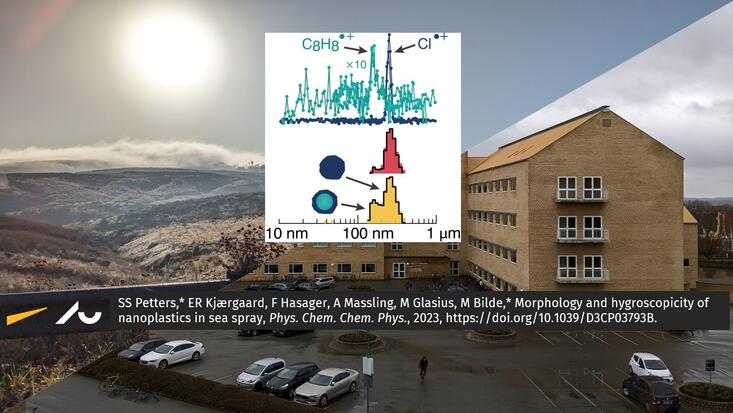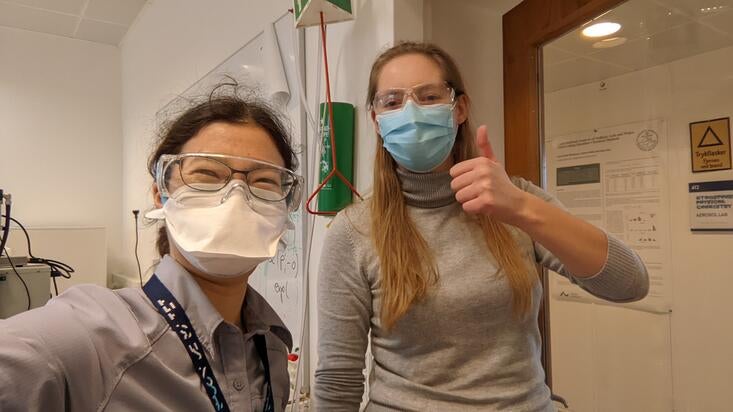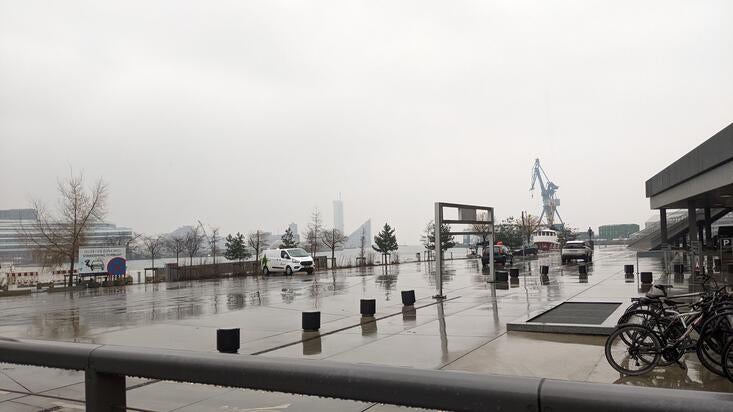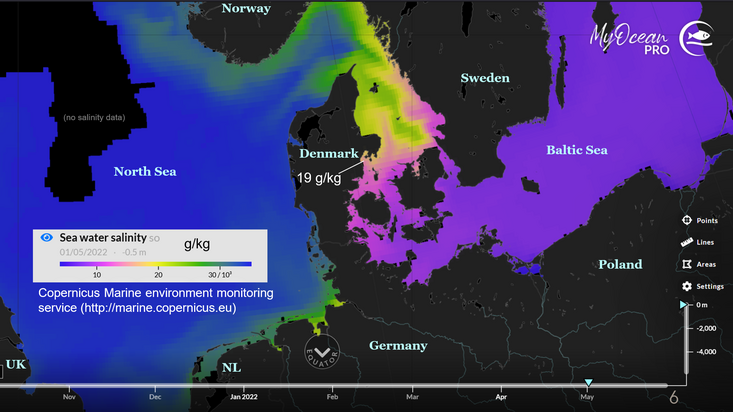Scientists characterize nanometer-thin coatings of salt on aerosolized nanoplastics

Plastic contamination is gaining attention as a pollutant widely found in all environments. Just this week, we heard about UN talks that opened Monday in Nairobi to negotiate a global plastic treaty. As plastics are being discussed in treaty negotiations, the details of how to detect airborne nanoplastics and the implications of their distribution for public health policy are an area of active research.
Third round of UN negotiations on global plastic treaty opens
The recent discovery of plastic particles in clouds highlighted by the Washington Post and other news outlets brings into focus the key problem - that airborne plastics are distributed through airborne transport and can be found in all environments - but they are difficult to detect.
A team of scientists from UCR and Aarhus University set out to examine nanoplastic aerosols in sea salt sprays in realtime - and in so doing, developed a technique to separate these airborne nanoplastics from similarly-sized salt particles.

in Denmark.
Photo: Sarah Petters
“We wanted to characterize the nanoplastic aerosols in real time using aerosol mass spectrometry. To separate the particles upstream of the mass spec, we found that the hygroscopicity tandem differential mobility analyzer, which measures water uptake, worked as a filter to help us measure plastic aerosol separately from salt aerosol,” said Dr. Sarah Petters, the lead author of the study.
Morphology and hygroscopicity of nanoplastics in sea spray
With this technique, the team was able to measure razor-thin salt coatings on 150-nm plastic aerosols. According to Petters, “The salt coating thickness depended on the bulk water composition and increased with higher sea salt concentration. It followed a power law, in other words, the log of the coating was linear with the log of salinity.”

plastic into the boundary layer. Nanoplastic aerosol can be transported long distances, potentially affecting ecosystems and public health.
Photo: Sarah Petters
The researchers needed to know how well the aerosol mass spectrometer was ionizing the plastics and the sea salt mixture - and they turned to the upstream aerosol instrumentation to find the right comparison. The mass detected by the mass spectrometer was compared to the particle size distribution measured upstream. Relaying the specifics, Petters added, “The relative ionization of nanoplastics and of sea salt chloride in the aerosol mass spectrometer, when compared to the calibration standard Nitrate, was 0.19 and 0.36, respectively. Sea salt and plastics - in this case, polystyrene - are both hard to ionize. We raised the vaporization temperature of the instrument to help get everything ionized and detected.” Reporting the ionization efficiency and temperature of the sea salt plastic mixture will help in the future to quantify plastic concentrations in salty marine air.

The task of detecting and chemically characterizing nanoplastics is like searching for a needle in a haystack. Image generated using E.U.
Copernicus Marine Service Information; DOI: https://doi.org/10.48670/moi-00016.
Leading the team were professors Merete Bilde and Marianne Glasius (Aarhus University Department of Chemistry). Dr. Sarah Petters was a postdoc at Aarhus University and joined the Center for Environmental Research and Technology (CE-CERT) at UCR in September. She was joined in the study by Eva Kjaergaard and Freja Hasager, PhD students in Chemistry at Aarhus University, and Andreas Massling, Professor of Atmospheric Science at Aarhus University.
This work was supported by the Independent Research Fund Denmark (grant number 0217-00442B), Villum Foundation (grant number 023001) and the Danish National Research Foundation (DNRF172) through the Center for Chemistry of Clouds.
The study is published in Physical Chemistry Chemical Physics:
Petters, S. S., Kjærgaard, E. R., Hasager, F., Massling, A., Glasius, M., and Bilde, M., Morphology and hygroscopicity of nanoplastics in sea spray. Phys. Chem. Chem. Phys., 2023, xx(xx).
References
Allen, S., Allen, D., Phoenix, V.R. et al. Atmospheric transport and deposition of microplastics in a remote mountain catchment. Nat. Geosci. 12, 339–344 (2019).
Penman, M., The latest unlikely place where you can now find microplastics. Washington Post, Nov. 2, 2023.
Petters, S. S., Kjærgaard, E. R., Hasager, F., Massling, A., Glasius, M., and Bilde, M., Morphology and hygroscopicity of nanoplastics in sea spray. Phys. Chem. Chem. Phys., 2023, xx(xx).
Wang, Y., Okochi, H., Tani, Y. et al. Airborne hydrophilic microplastics in cloud water at high altitudes and their role in cloud formation. Environ Chem Lett 21, 3055–3062 (2023).